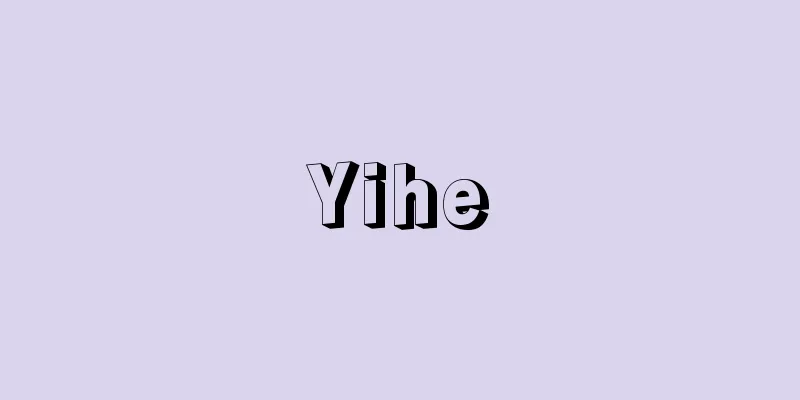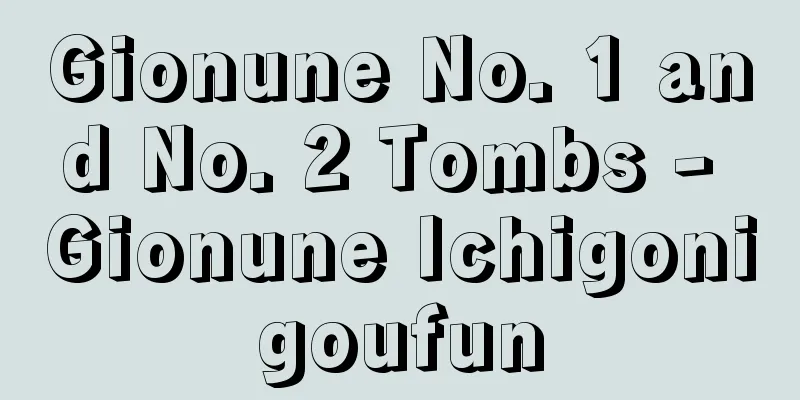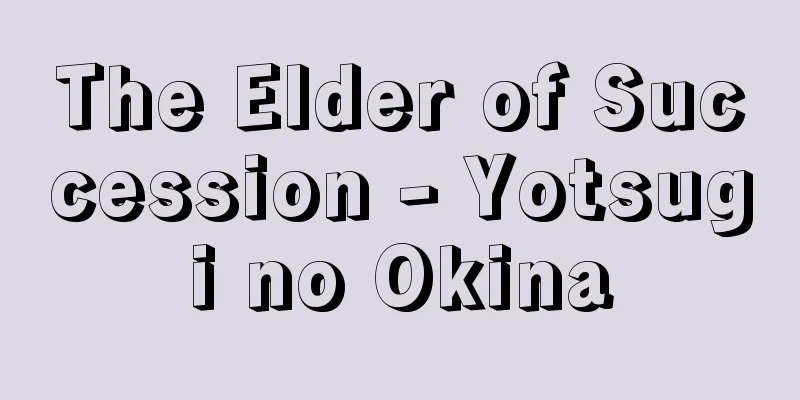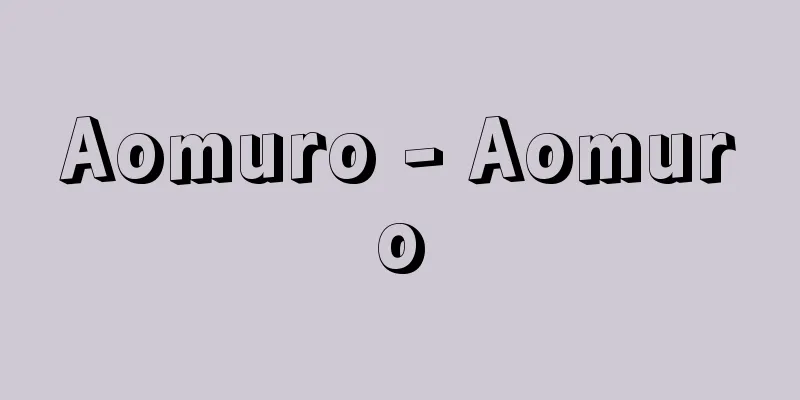Shanghai Incident
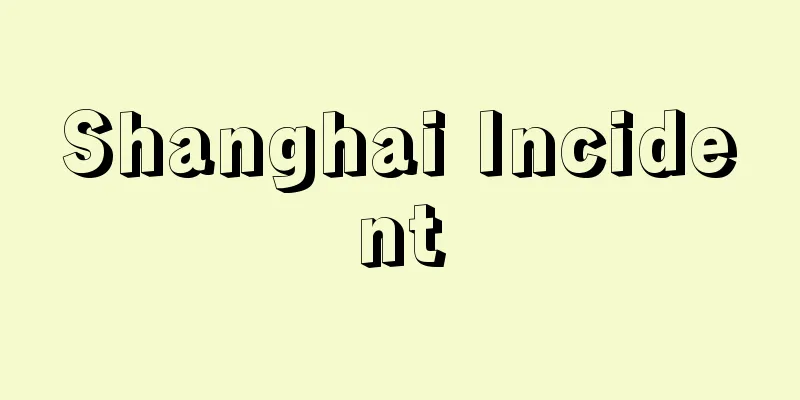
|
The first and second wars between Japan and China. [Makio Okabe] FirstA local war between Japan and China that broke out during the Manchurian Incident. It arose from a plot to divert the world's attention from the work to establish "Manchukuo" and to suppress the anti-Japanese movement in China. Lieutenant General of the General Staff, Ryūkichi Tanaka, and others, at the request of Colonel Itagaki Seishiro, Chief of Staff of the Kwantung Army, bribed Chinese people and attacked and killed a Japanese monk in January 1932 (Showa 7), creating a tense situation in Shanghai, the center of the anti-Japanese movement. This incident was settled after the Chinese authorities accepted Japan's protest requests, but the Japanese Navy deployed its marines in the Japanese Concession and clashed with the Chinese army on the 28th. The 19th Route Army on the Chinese side was a highly anti-Japanese elite, and they skillfully used the land and sea features in Shanghai city and the northwest suburbs to harass the marines. In February, the Japanese government mobilized more than three army divisions and a fierce battle unfolded. As Shanghai was a place where the interests of various countries intersected, and there was international pressure, including ceasefire recommendations from the UK, USA, and France, Japan, fearing intervention by the League of Nations, finally took the stronghold of Daijochin on March 1, just before the League General Assembly, and on the 3rd the fighting ceased with the retreat of the 19th Route Army. A ceasefire agreement was signed in May, and Japanese forces withdrew. During this time, "Manchukuo" was established in March, and the plot was successful to some extent, but it resulted in a sudden increase in anti-Japanese sentiment in China and wariness of the great powers towards Japan. During the attack on Miaoheng Town, the soldier who charged in with a demolition shell was hailed as a national hero known as the Three Bombers. In April, during ceasefire negotiations, a bomb thrown by Korean independence activist Yun Bong-gil injured General Shirakawa Yoshinori, commander of the Shanghai Expeditionary Army, and Shigemitsu Mamoru, the Japanese envoy to China (Shirakawa later died), causing a great stir both at home and abroad. [Makio Okabe] SecondFollowing the Marco Polo Bridge Incident, this was the battle that sparked the Second Sino-Japanese War. In August 1937 (Showa 12), when fighting in North China had reached a stalemate due to resistance from the Chinese army, the Japanese Navy attacked the Chinese army in Shanghai, using the incident in which Lieutenant Oyama Isao of the Japanese Navy Marine Corps and others were shot to death as an excuse. The Japanese army was again in a difficult position, but in the same month they dispatched two army divisions and launched an all-out war. From then on, the Chinese Nationalist government also leaned towards resisting Japan, which led to the long-lasting Second Sino-Japanese War that lasted for eight years. [Makio Okabe] "History of the Sino-Japanese War" by Ikuhiko Hata (1972, Kawade Shobo Shinsha)" ▽ "History of the Pacific War 1" edited by the Society of Historical Studies (1971, Aoki Shoten)" ▽ "Showa History 4: The Opening of the Fifteen-Year War" by Keiichi Eguchi (1982, Shogakukan) [References] | |Source: Shogakukan Encyclopedia Nipponica About Encyclopedia Nipponica Information | Legend |
|
日中間の戦争で、第一次、第二次にわたる。 [岡部牧夫] 第一次満州事変の際に起こった日中間の局地戦争。世界の耳目を「満州国」の設立工作からそらし、中国の抗日運動を抑えるための謀略工作から発した。参謀本部付少佐田中隆吉(りゅうきち)らは、関東軍参謀大佐板垣征四郎(せいしろう)らの依頼で中国人を買収し、1932年(昭和7)1月、日本人僧侶(そうりょ)を襲撃・死傷させ、抗日運動の中心地上海に険悪な情勢をつくりだした。この事件は、中国側当局が日本の抗議要求をのんで落着したが、日本海軍は日本租界に陸戦隊を配備し、28日中国軍と衝突した。中国側の第十九路軍は抗日意識の高い精兵で、上海市街や北西郊外の水陸の地物を巧みに利用して陸戦隊を苦しめた。2月、日本政府は陸軍3個師団余を動員、激戦を展開した。上海は各国の権益が交錯するため、英・米・仏3国の休戦勧告など国際的圧力もあり、国際連盟の介入を恐れた日本は、連盟総会直前の3月1日ようやく大場鎮(だいじょうちん)の堅陣を落とし、3日第十九路軍の退却で戦闘を中止した。5月に停戦協定が結ばれ、日本軍は撤退した。この間3月に「満州国」が発足し、謀略の意図はいちおう成功したが、中国の抗日意識や列強の対日警戒心を一挙に増大させる結果を招いた。廟行鎮(びょうこうちん)攻撃の際、破壊筒を持って突入した兵士が爆弾三勇士として国民的英雄とされ、また停戦交渉中の4月、朝鮮人独立運動家尹奉吉(いんほうきつ)の投弾で上海派遣軍司令官大将白川義則(しらかわよしのり)、中国公使重光葵(しげみつまもる)らが負傷(のち白川は死亡)するなど、内外に大きな波紋を与えた。 [岡部牧夫] 第二次盧溝橋(ろこうきょう)事件に次いで、日中戦争の導火線となった戦闘。華北での戦闘が中国軍の抵抗で膠着(こうちゃく)していた1937年(昭和12)8月、日本海軍の陸戦隊中尉大山勇夫(いさお)らが射殺された事件を口実に、海軍は上海の中国軍を攻撃した。日本軍はふたたび苦戦に陥ったが、同月陸軍2個師団を派遣、全面的な戦争を展開した。以後、中国国民政府も対日抗戦に傾き、8年の長期に及ぶ日中戦争に発展してゆく。 [岡部牧夫] 『秦郁彦著『日中戦争史』(1972・河出書房新社)』▽『歴史学研究会編『太平洋戦争史1』(1971・青木書店)』▽『江口圭一著『昭和の歴史4 十五年戦争の開幕』(1982・小学館)』 [参照項目] | |出典 小学館 日本大百科全書(ニッポニカ)日本大百科全書(ニッポニカ)について 情報 | 凡例 |
Recommend
Franklin
...Yellowknife is the provincial capital. It occu...
Stroboscope - strobosukopu (English spelling) stroboscope
A device that observes a moving object in a state...
Xin-min xue-hui; Hsin-min hsüeh-hui
A progressive student group formed in Changsha, Hu...
Standard & Poor's Corp. (English)
… [Mera Shu]. … *Some of the terminology referenc...
Kudamatsu [city] - Kudamatsu
A city in the southeastern part of Yamaguchi Prefe...
Comptonia kidoi (English spelling) Comptoniakidoi
…[Kazuo Asama]. … *Some of the terminology that m...
Origenism - Origenism
…In 250, he was imprisoned during the persecution...
Golden Hatchet
A folktale. It is one of the stories of visiting ...
Basicity (acidity)
For example, weak acids such as HCN, H 3 BO 3 , C...
Couple
〘 noun 〙 (avec meaning "together") 1. A ...
Michell, John
Born: 1724. Nottinghamshire [Died] 21 April 1793. ...
Frederik VI
...Politically, Struensee, who promoted liberal a...
China-North Korea Facts
A book written by Yamaga Soko, a Confucian schola...
Half-imported - Hanfuyu
In the Heian and Kamakura periods, this refers to ...
Hypsarhythmia
...Mental retardation is present and intractable....

